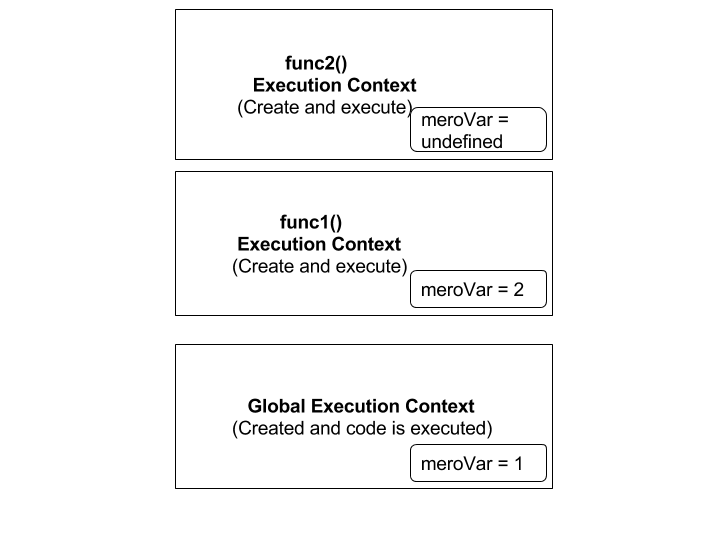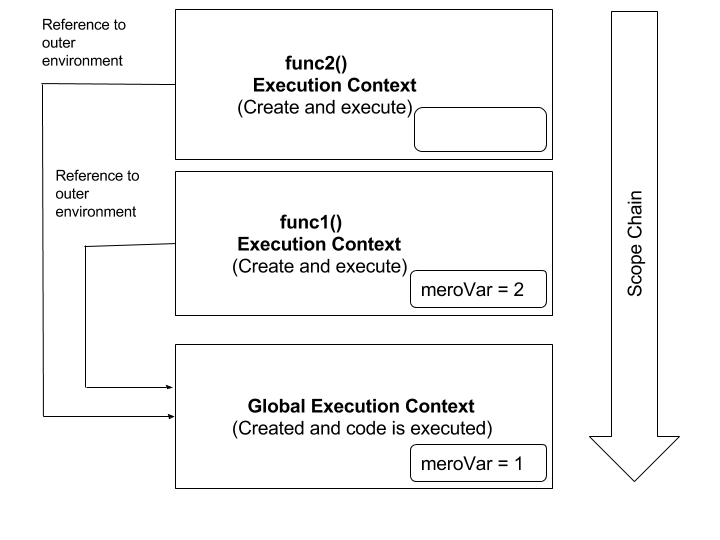What is JavaScript execution context stack?
Whenever JS engine runs a piece of code, the environment in which it is executed is called execution context where variables and functions are actually resolved or executed.
Whenever a function is invoked, JS engine creates a new execution context and pushes it on top of the global execution context. Once a function finishes its execution, it is poped out from the stack. Let me explain it through an example.
Let’s say we have following block of code and lets try to guess what would be the result.
function func2() {
var meroVar;
console.log(meroVar);
}
function func1() {
var meroVar = 2;
func2();
console.log(meroVar);
}
var meroVar = 1;
func1();
console.log(meroVar);
It will print undefined , 2 and 1. So, whats actually happening here? When func1() is invoked, a new execution context for func1() is created with its own variable environment and pushed on top of global execution context. Similarly, when func2() is called inside func1(), new execution context is created and push on top position as shown in figure below. JS engine executes top most execution context and remove it and goes thoughly below the stack as described in the diagram below.

What is scope chain?
For each execution context there is scope chain associated with it. Scope chain is used for determining variable access and identifier resolution. Lets modify our previous example to understand about scope chain.
function func2() {
console.log(meroVar);
}
function func1() {
var meroVar = 2;
func2();
console.log(meroVar);
}
var meroVar = 1;
func1();
console.log(meroVar);
Notice func2(), we have removed var meroVar; from the function. Now run this code, what do you expect?….
It will print 1, 2, 1. First of all execution context of func2() tries to find the value of meroVar within its own context but if it can’t resolve the value in its own execution context than it tries to go through the execution context associated with its scope chain. Here, func1() and func2() are created in the global context similar to a variable declaration var meroVar = 1;, therefore execution context of func2() and func1() has reference to an outer environment as shown in the figure below. In other word, func1() and func2() has same lexical environment. Lexical environment means the place where something sits physically inside your code.

If we had cerated func2() inside func1(), than execution context of func2() would reference to outer lexical environemnt of func1()
function func1() {
function func2() {
console.log(meroVar);
}
func2();
}
var meroVar = 1;
func1();
console.log(meroVar);
It will print 1, 1.